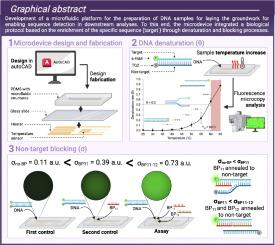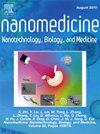Efficient enrichment of free target sequences in an integrated microfluidic device for point-of-care detection systems
Abstract
Nucleic acid biomarker detection has great importance in the diagnosis of disease, the monitoring of disease progression and the classification of patients according to treatment decision making. Nucleic acid biomarkers found in the blood of patients have generated a lot of interest due to the possibility of being detected non-invasively which makes them ideal for monitoring and screening tests and particularly amenable to point-of-care (POC) or self-testing. A major challenge to POC molecular diagnostics is the need to enrich the target to optimise detection. In this work, we describe a microfabricated device for the enrichment of short dsDNA target sequences, which is especially valuable for potential detection methods, as it improves the probability of effectively detecting the target in downstream analyses. The device integrated a heating element and a temperature sensor with a microfluidic chamber to carry out the denaturation of the dsDNA combined with blocking-probes to enrich the target. This procedure was validated by fluorescence resonance energy transfer (FRET) technique, labelling DNA with a fluorophore and a quencher. As proof of concept, a 23-mer long dsDNA sequence corresponding to the L858R mutation of the EGFR gene was used. The qualitative results obtained determined that the most optimal blocking rate was obtained with the incorporation of 11/12-mer blocking-probes at a total concentration of 6 μM. This device is a powerful DNA preparation tool, which is an indispensable initial step for subsequent detection of sequences via nucleic acid hybridisation methods.


 求助内容:
求助内容: 应助结果提醒方式:
应助结果提醒方式:


